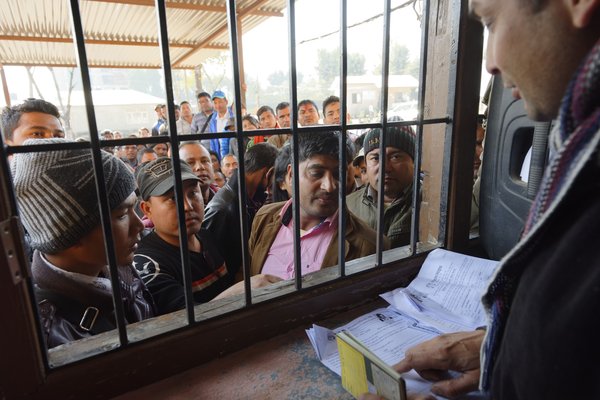
Receiving a cash transfer payment from employees who work for Splash in Freetown, Sierra Leone. Photo Dominic Chavez/World Bank. CC BY-NC-ND 2.0.
Global interest on expanding social protection to low- and middle-income countries, particularly since the early 2000s, has translated into many new initiatives across countries and an ever-greater number of people covered.
Over the same period, international and internal migration have also continued increasing worldwide. Migration, and the desire for change, arises from the need to manage a wide range of socioeconomic risks. Migrating is often not the only option available. In fact, most people do not aspire to migrate at all, while others do not have the capacity to migrate. Providing access to alternative livelihood opportunities and coping mechanisms may provide another option.
Migration often results from the need to ensure a job, a better and more steady income and to protect one’s family against risks, all similar to the aims of social protection, this paper reviews the literature on the links between the decision to migrate and social protection coverage.
Social protection programmes are highly contextual, and the conditions, mechanisms and specificities differ from country to country, and programme to programme. The design and delivery of social protection programmes, such as who receives the transfer, how much is transferred and the conditions under which the transfer is made, are therefore highly relevant when discussing how they may influence migration decisions.
This paper reviews the body of academic literature on the link between emigration and social protection. It reviews 76 papers, covering 85 countries, published before or in 2020. The following types of social protection programmes are reviewed:
- Conditional cash transfers (CCTs)
- Unconditional cash transfers (UCTs)
- Non-contributory pensions
- Social and health insurance schemes
- Public works programmes



